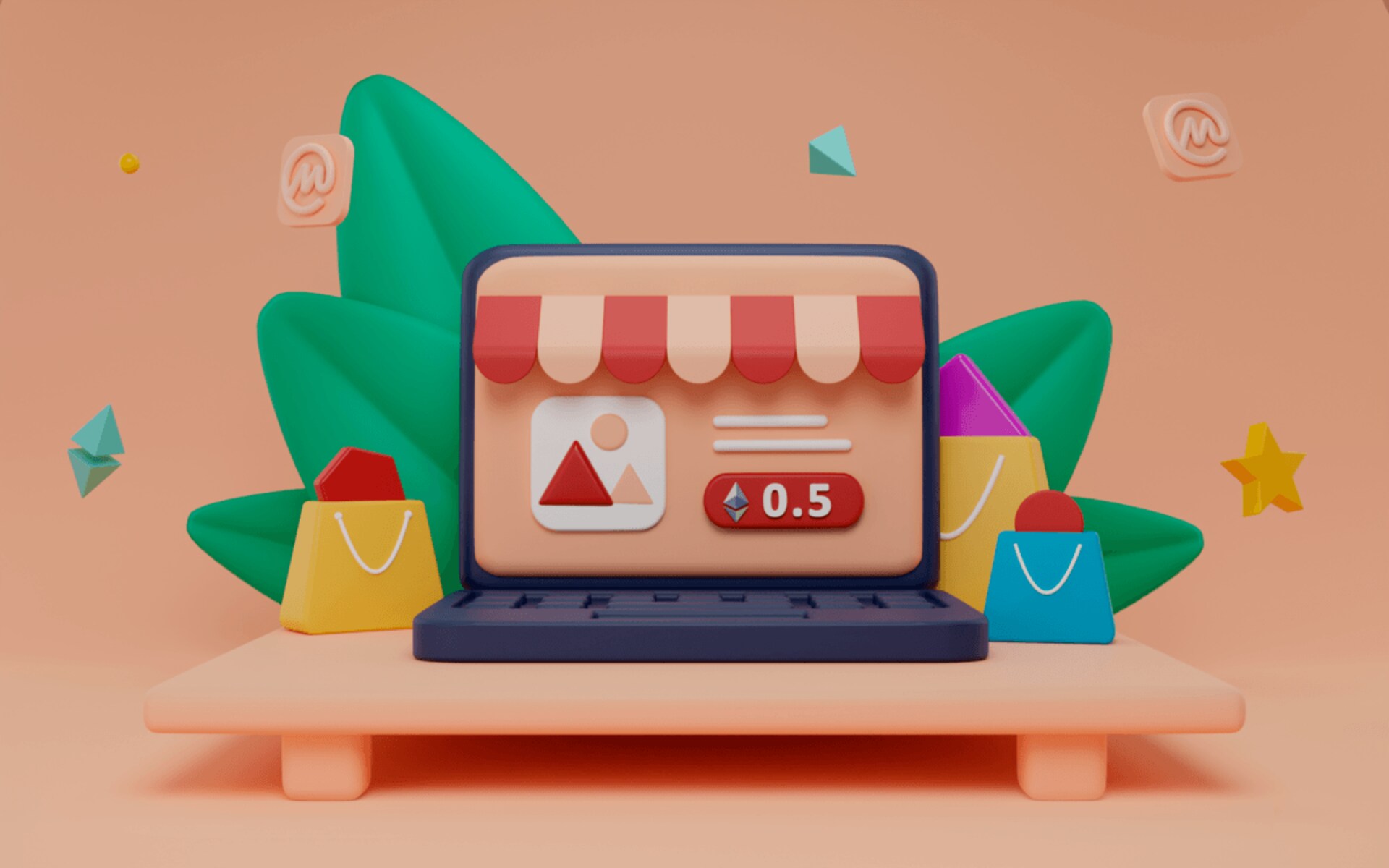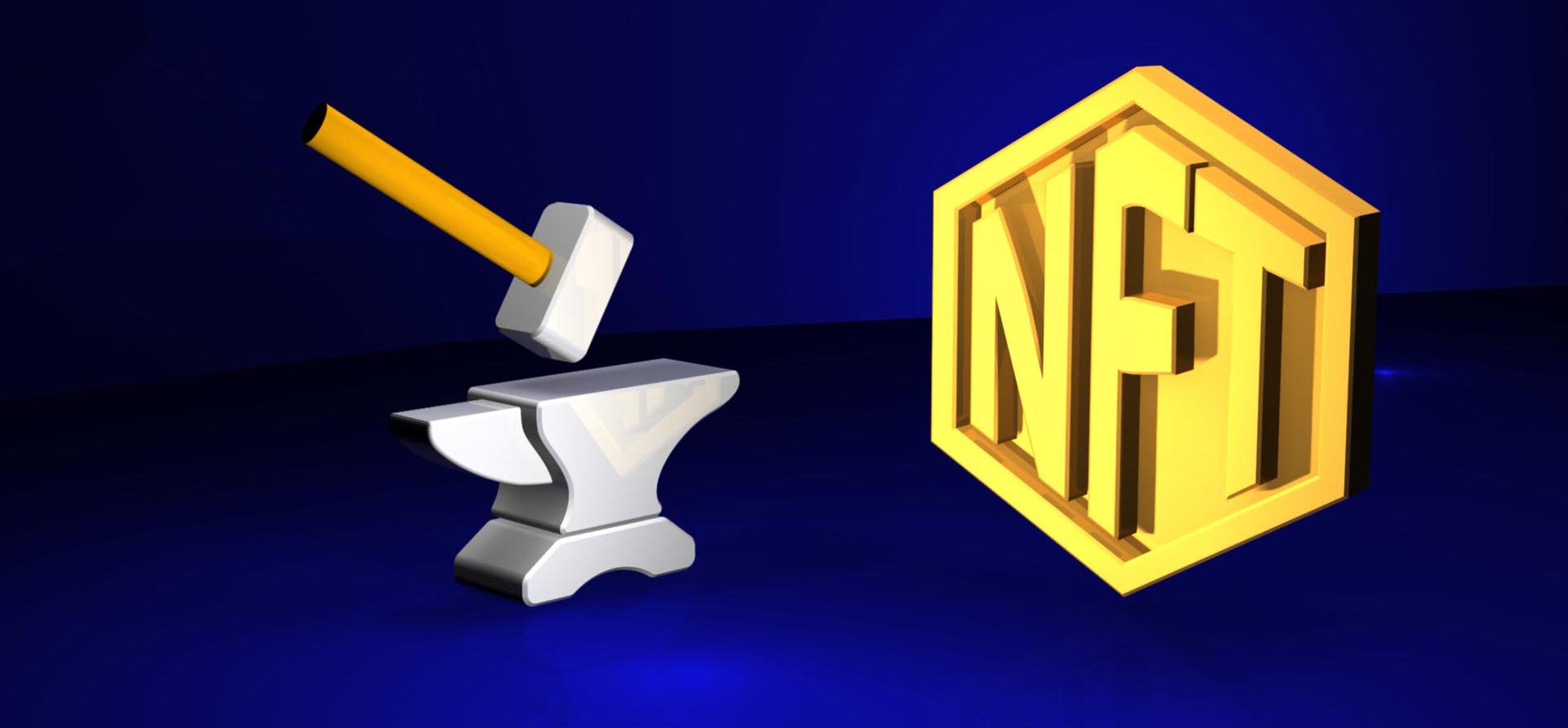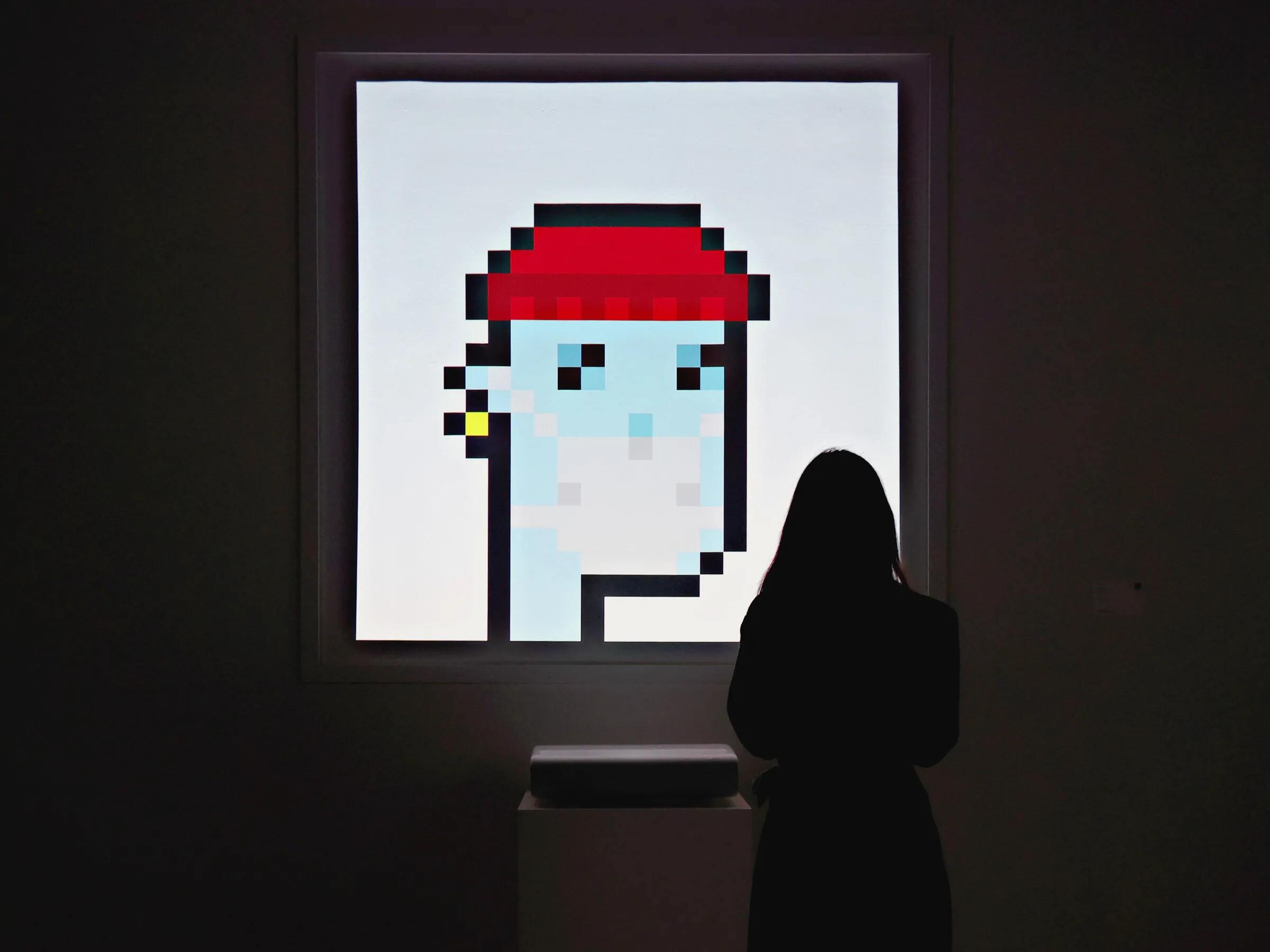Overview
NFTs, or non-fungible tokens, have gained significant popularity in recent years as a new form of digital asset. These unique tokens represent ownership of a specific item or piece of digital content, such as artwork, music, or virtual real estate, among others. With the increasing demand for NFTs, understanding the concept of a floor price is essential for both collectors and investors.
A floor price, in the context of NFTs, refers to the minimum value at which a particular token is being traded or sold. It represents the baseline or starting point for pricing an NFT within a marketplace or auction. Setting a floor price helps establish a benchmark for potential buyers and creates a level of value and credibility within the NFT community.
Determining the floor price of an NFT is a complex process, influenced by various factors such as the scarcity of the token, the reputation of the creator, the desirability of the artwork or content, and the overall market trends. Collectors and investors pay close attention to the floor price as it often reflects the perceived value and potential resale value of an NFT.
The floor price is calculated based on listings and sales data within a specific marketplace or platform. As buyers and sellers interact within the marketplace, the floor price can fluctuate based on supply and demand dynamics. When a specific NFT is sold below its existing floor price, it may lead to a drop in the overall value of similar tokens.
Several factors influence the floor price of an NFT. Rarity is a significant factor – the scarcer an NFT, the higher its perceived value. Additionally, the reputation and notoriety of the creator can significantly impact the floor price. Prominent artists or celebrities often command higher prices for their NFTs due to their established brand and fanbase.
Market trends and volatility also play a crucial role in determining the floor price. NFTs, like any other asset, are subject to market fluctuations. If a particular category of NFTs experiences a surge in demand, it can lead to an increase in the floor price. However, market volatility can also cause rapid price fluctuations and potential declines in value.
For NFT collectors, the floor price holds several important implications. A higher floor price may indicate a greater level of exclusivity and value associated with owning a particular NFT. It can also influence the decision-making process when assessing the investment potential of an NFT. Collectors often evaluate the floor price in conjunction with other factors, such as the reputation of the creator and the historical performance of similar tokens.
While the floor price is a valuable indicator for NFT collectors and investors, it is not without risks. Market trends can change rapidly, and identifying stable long-term value can be challenging. Additionally, the lack of regulatory oversight and the relatively new nature of the NFT market can create uncertainty and volatility.
What Are NFTs?
NFTs, or non-fungible tokens, are digital assets that represent ownership or proof of authenticity for a specific item or piece of content. Unlike cryptocurrencies like Bitcoin or Ethereum, which are interchangeable and hold the same value, NFTs are unique and indivisible. They utilize blockchain technology to record and verify ownership, providing transparency and immutability.
One of the primary characteristics of NFTs is their ability to represent digital collectibles, artworks, and other virtual assets. Artists and creators can tokenize their work, turning them into unique digital assets that can be bought, sold, and owned by individuals. This has opened up new possibilities for creators to monetize their digital creations and engage with a global audience.
NFTs have gained significant traction in the art world, with digital artworks fetching substantial prices at auctions and marketplaces. The ability to prove ownership, scarcity, and authenticity through blockchain technology has attracted both collectors and investors alike. NFTs have also found their way into various other industries, including the music industry, gaming, virtual real estate, and even sports memorabilia.
With NFTs, creators can establish a direct relationship with their audience and fans. They can release limited editions or exclusive artworks, providing a sense of exclusivity and ownership to collectors. NFT ownership can also come with additional benefits, such as royalties when the NFT is resold in the future, ensuring ongoing revenue streams for creators.
However, the NFT market is not without its share of controversies and challenges. Critics point to the environmental impact of blockchain technology, especially in energy-intensive proof-of-work systems. There are also concerns about copyright infringement and the ease of copying and distributing digital content. As the market continues to evolve, regulations and safeguards are being explored to address these issues.
Overall, NFTs have revolutionized the concept of digital ownership and created new possibilities for artists, collectors, and investors. The ability to tokenize and trade unique digital assets has opened up a world of opportunities and creative expression. While the future of NFTs remains dynamic and uncertain, their impact on the art and digital world is undeniable.
What Is a Floor Price?
In the world of NFTs, a floor price refers to the minimum value at which a particular non-fungible token is being traded or sold within a marketplace. It serves as the baseline or starting point for pricing an NFT and helps establish a benchmark for potential buyers and sellers within the NFT community.
The concept of a floor price is crucial in creating a sense of value and credibility within the NFT market. Just as in traditional markets, the floor price provides a reference point by which collectors and investors can assess the worth of an NFT. It helps set expectations and acts as a starting point for negotiations.
Determining the floor price of an NFT involves various factors, including market trends, scarcity, and the perceived value of the token. Artists and creators often play a significant role in establishing the initial floor price of their NFTs. They take into account factors such as the uniqueness of the digital content, their reputation, and the demand for their work.
Marketplaces and platforms that facilitate NFT trades are instrumental in determining and maintaining floor prices. These platforms aggregate data from various sales and listings, providing a transparent view of the market. Based on this data, the floor price can be adjusted as buyers and sellers interact and the dynamics of supply and demand come into play.
When an NFT is sold below its current floor price, it can have implications for the overall value of similar tokens. Buyers and sellers take notice of such sales and may reassess their own pricing strategies, influencing market trends and the floor price for similar NFTs.
The floor price also serves as a point of comparison for collectors and investors. When evaluating an NFT, potential buyers often consider the floor price as an indicator of the token’s value and potential for future appreciation. A higher floor price may suggest a greater level of exclusivity and desirability associated with owning a specific NFT.
It is important to note that the floor price is not a fixed value, but rather a dynamic and fluid metric. It can change over time as market conditions shift, new buyers enter the market, or trends in digital collectibles emerge. Monitoring the floor price can provide insights into the value and demand for specific NFTs and inform purchasing decisions.
Overall, the floor price plays a significant role in the NFT ecosystem. It not only sets the minimum value for NFTs but also serves as a vital benchmark for collectors, investors, and creators. By understanding the concept of a floor price, participants in the NFT market can navigate the landscape more effectively and make informed decisions regarding both buying and selling NFTs.
Determining the Floor Price
Determining the floor price of an NFT involves a combination of factors, including market dynamics, scarcity, historical sales data, and the reputation of the creator. It is a process that requires careful evaluation and consideration to establish a fair and realistic baseline value for an NFT.
Marketplaces and platforms that facilitate NFT trading play a crucial role in determining the floor price. They serve as a centralized hub for buying and selling NFTs, where participants can view listings, track sales data, and gauge market trends. These platforms aggregate data from various sales and listings to provide insights into the value and demand for specific NFTs.
Scarcity is a significant factor in determining the floor price. The rarity of an NFT can greatly influence its perceived value and potential market price. If an NFT is one-of-a-kind or part of a limited edition release, it is more likely to have a higher floor price due to its exclusivity.
The reputation and notoriety of the creator also play a crucial role in determining the floor price. Established artists or creators with a strong following and track record of successful NFT sales can command higher prices for their tokens. The reputation of the creator adds a level of prestige and desirability to the NFT, influencing its perceived value in the market.
Historical sales data is another important factor in determining the floor price. By analyzing past sales of similar NFTs, collectors and investors can gain insights into the market dynamics and price trends. This data provides a reference point and helps establish a benchmark for setting the floor price, taking into account factors such as the artwork’s uniqueness, demand, and previous pricing patterns.
Factors such as the overall demand for NFTs, the cultural relevance of the artwork or content, and the current trends within the NFT market also come into play when determining the floor price. Market trends can fluctuate rapidly, and understanding the current sentiment and preferences of collectors is vital.
Setting the floor price requires a balance between generating interest and demand while still remaining within a reasonable price range. A floor price that is set too high may deter potential buyers, whereas a floor price that is set too low can undermine the perceived value and potential profitability of the NFT.
It is worth noting that determining the floor price is ultimately a subjective process, influenced by various factors and market conditions. It requires a combination of data analysis, market intuition, and understanding of the target audience to arrive at a fair and competitive floor price for an NFT.
By carefully evaluating market dynamics, scarcity, creator reputation, historical sales data, and current trends, participants in the NFT market can make informed decisions regarding the floor price of their tokens. The floor price serves as a starting point for pricing negotiations, setting expectations, and establishing credibility within the NFT community.
Factors Influencing the Floor Price
The floor price of an NFT is influenced by a variety of factors that play a significant role in determining its value and market demand. Understanding these factors is essential for collectors, investors, and creators alike as they navigate the dynamic world of NFTs.
1. Scarcity: The scarcity of an NFT is a key driver of its floor price. The rarer an NFT, the higher its perceived value. Limited edition releases or NFTs with unique attributes or characteristics often command higher prices due to their exclusivity. Collectors are willing to pay a premium for one-of-a-kind or scarce tokens.
2. Creator Reputation: The reputation and notoriety of the creator significantly impact the floor price. Well-known artists, musicians, and celebrities bring their established brand and fanbase to the NFT market, driving up the value of their tokens. Collectors are more inclined to invest in NFTs from creators with a track record of successful and influential work.
3. Historical Performance: The historical sales performance of an NFT and similar tokens can influence the floor price. Analyzing past sales data helps collectors and investors gauge the demand and pricing patterns for specific types of NFTs. Tokens that have consistently performed well in the market may have a higher floor price due to their track record of success.
4. Market Trends: The overall trends within the NFT market can impact the floor price. Popularity and demand can fluctuate rapidly, affecting the perceived value and pricing of NFTs. Monitoring market trends allows participants to gauge the level of interest and demand for different types of NFTs and adjust the floor price accordingly.
5. Subject Matter and Content: The subject matter and content of an NFT play a crucial role in determining its floor price. Tokens that capture current trends, cultural references, or highly sought-after themes often command higher prices due to their relevance and desirability. The uniqueness and creativity of the content can contribute to a higher perceived value.
6. Utility and Interactivity: The utility and interactivity of an NFT can influence its floor price. Tokens that offer additional benefits or functionality, such as access to exclusive events, virtual experiences, or bonus content, may be valued higher than standalone NFTs. The added value and potential use cases of an NFT can contribute to a higher floor price.
7. External Influences: External factors, such as endorsements, collaborations, or media attention, can impact the floor price of an NFT. Partnerships with well-known brands, influencers, or celebrities can increase the perceived value and desirability of an NFT. Media coverage and social media buzz can create a higher demand and subsequently raise the floor price.
It is important to note that these factors are not fixed or exhaustive, and the floor price of an NFT can be subject to change based on evolving market conditions and investor sentiment. Collectors, investors, and creators must stay informed and adapt their pricing strategies based on these influential factors to effectively navigate the competitive NFT market.
Market Trends and Volatility
The NFT market is known for its dynamic nature and ever-changing trends. Staying attuned to market trends and understanding volatility is crucial for collectors, investors, and creators participating in the NFT ecosystem.
Market trends play a significant role in determining the floor price and overall value of NFTs. The preferences of collectors and investors can shift rapidly, leading to fluctuations in demand and pricing. Keeping a close eye on emerging trends allows participants to identify opportunities and make informed decisions regarding which NFTs to buy or create.
Market trends can be influenced by various factors, including popular themes, cultural moments, and celebrity endorsements. For example, a particular genre of artwork or a trending subject matter may experience a surge in demand, driving up the floor prices of NFTs associated with that trend. It is important to differentiate between short-term fads and sustainable trends to make sound investment decisions.
Volatility is another characteristic of the NFT market that participants must be aware of. The value of NFTs can fluctuate significantly over short periods of time. Market volatility can be attributed to factors such as sudden shifts in investor sentiment, changes in regulatory frameworks, or broader market conditions. Understanding and managing the risks associated with volatility is essential when entering the NFT market.
Investors and collectors should be prepared for sudden price movements and the potential for both gains and losses. Price volatility can present opportunities for strategic buying or selling, but it can also lead to unforeseen losses if market conditions deteriorate. Monitoring market trends and staying informed about the factors that drive volatility can help mitigate risks and make more educated decisions.
It is also worth noting that while market trends and volatility can provide insights into the value and demand for NFTs, they do not guarantee long-term sustainability. The NFT market is still relatively new and evolving, and future developments, such as changes in technology, regulations, or market dynamics, can significantly impact trends and volatility.
Participants in the NFT market should approach market trends and volatility with a balanced perspective. While they can provide opportunities for growth and profit, it is important to exercise caution and conduct thorough research before making investment decisions. Diversifying one’s NFT portfolio and keeping a long-term perspective can help navigate market shifts and minimize potential risks associated with trends and volatility.
Ultimately, staying informed, conducting thorough due diligence, and remaining adaptable are key strategies for navigating market trends and volatility in the dynamic world of NFTs.
The Importance of Floor Price for NFT Collectors
For NFT collectors, the floor price holds significant importance in assessing the value and potential investment opportunities within the NFT market. It serves as a crucial benchmark and reference point when evaluating the desirability, exclusivity, and potential resale value of an NFT.
The floor price provides a starting point for collectors to gauge the level of interest and demand for a particular NFT. A higher floor price often indicates a greater level of exclusivity and perceived value associated with owning that specific token. Collectors gravitate towards NFTs with higher floor prices as they believe they are investing in assets that hold greater potential for appreciation over time.
Furthermore, the floor price can act as an indicator of the potential resale value of an NFT. It helps collectors gauge the market sentiment towards a specific NFT and assess its potential for future profitability. A higher floor price suggests that there is a consensus among the NFT community about the value of the token.
Understanding the floor price is particularly important when considering the investment potential of an NFT. By assessing the floor price in conjunction with other factors like the reputation of the creator, historical performance, and market trends, collectors can make more informed decisions about which NFTs to acquire.
The floor price also plays a role in establishing credibility within the NFT community. Collectors often look for tokens that have reputable floor prices as it signifies that the NFT has achieved a certain level of market recognition and validation. A high floor price can signal that the NFT is in demand and has garnered attention from collectors and investors.
Additionally, the floor price assists collectors in identifying potential buying opportunities. When an NFT is sold below its floor price, it may indicate a temporary dip or undervaluation, providing a chance for collectors to acquire the token at a potential bargain. By understanding the market sentiment reflected in the floor price, collectors can make strategic purchases based on their assessment of the NFT’s long-term potential.
However, it is important to note that while the floor price is an influential factor, it should not be the sole determining factor in collecting NFTs. Collectors should also consider their personal preferences, the artwork’s quality, the creator’s reputation, and their own investment goals before making a purchase decision.
In summary, the floor price holds significant importance for NFT collectors as it acts as a benchmark for assessing value, desirability, and investment potential. It enables collectors to gauge market sentiment, identify potential resale value, and make informed decisions about the NFTs they acquire.
Risks and Considerations
While the NFT market offers exciting opportunities, it is essential for collectors, investors, and creators to be aware of the risks and considerations involved. The following are key factors to consider before engaging with NFTs:
1. Market Volatility: The NFT market is highly volatile, with prices often experiencing rapid fluctuations. Collectors should be prepared for the possibility of significant price changes and potential losses in the value of their NFT investments. It is crucial to approach NFTs with a long-term perspective and a diversified portfolio.
2. Lack of Regulation: The NFT market is still relatively new and unregulated. This lack of oversight can expose participants to risks such as fraud, scam projects, and counterfeit NFTs. It is important to conduct thorough research, verify the authenticity of NFTs, and transact on trusted platforms to mitigate these risks.
3. Environmental Concerns: The technology behind NFTs, particularly blockchain networks that use proof-of-work algorithms, can have heightened energy consumption and environmental impacts. Collectors should be aware of the carbon footprint associated with their NFT activities and consider supporting environmentally friendly alternatives.
4. Copyright and Intellectual Property Issues: The digital nature of NFTs raises concerns regarding copyright infringement and intellectual property rights. It is essential to respect the rights of creators and ensure that the NFTs being collected or created do not violate any existing copyrights or trademarks.
5. Liquidity Challenges: While some NFTs can be highly liquid and easily tradable, others may experience limited liquidity, making it difficult to sell or exit positions quickly. Collectors should consider the liquidity of specific NFTs and understand the potential challenges they may face in the event of wanting to sell or transfer ownership.
6. Emotional Attachments: Collecting NFTs can involve emotional attachments to digital assets, especially when they represent personal memories or creations. It is important to consider the potential impact of attaching too much value or sentiment to NFTs and to approach collecting with a balanced mindset to avoid undue emotional biases.
7. Technological Risks: The reliance on blockchain technology introduces technological risks and challenges. Issues such as network congestion, scalability limitations, and even software bugs can impact the functionality and long-term viability of NFTs. Staying informed about technological developments and advancements in the space is crucial.
It is essential to conduct thorough research, exercise caution, and consider these risks and considerations before entering the NFT market. Engaging with trusted platforms, seeking legal advice, and being well-informed about the NFTs being collected or created can help mitigate potential risks and safeguard against unwanted outcomes.
Conclusion
The world of NFTs presents exciting opportunities for collectors, investors, and creators to participate in the digital asset market. Understanding the concept of a floor price and its importance is vital for navigating the NFT ecosystem effectively.
A floor price serves as a benchmark for NFT value, establishes credibility within the market, and helps collectors assess the desirability and potential resale value of an NFT. Factors such as scarcity, creator reputation, historical performance, and market trends influence the determination of the floor price. By considering these factors, participants can make more informed decisions about pricing their NFTs or evaluating investment opportunities.
It is essential to remain aware of market trends and volatility, as these aspects shape pricing dynamics in the NFT market. Understanding market trends allows collectors and investors to identify emerging opportunities and make strategic decisions. Additionally, being mindful of the risks and considerations associated with the NFT market, such as market volatility, lack of regulation, and environmental concerns, is crucial for managing potential pitfalls and safeguarding investments.
The NFT market continues to evolve, and its long-term sustainability and impact remain to be seen. However, by staying informed, conducting thorough research, and exercising caution, participants can navigate this dynamic landscape and capitalize on the opportunities presented by NFTs.
As the NFT market continues to expand and mature, collectors, investors, and creators must adapt to changing market dynamics and trends. By understanding the importance of the floor price and considering the risks and considerations involved, participants can engage in the NFT market more confidently and make informed decisions that align with their individual goals and interests.

























